Christie’s Geneva to offer rare orange diamond in magnificent jewels sale
Lot 286. "The Orange", the Largest fancy Vivid Orange Diamond in The World. © Christie's Images Ltd 2013
Geneva - Christie’s announce the sale of THE ORANGE, the largest fancy vivid orange diamond ever to appear for sale at auction. Weighing approximately 14.82 carats, this sensational gem - by far the largest fancy vividorange diamond in the world - will lead the Christie’s auction of Magnificent Jewels to be held in Geneva on 12November 2013.
Featuring over 280 lots, Christie’s sale includes some of the rarest gems, impressive period and signed jewels aswell as Royal treasures.
Provenance will play a key role as exemplified by the sophisticated jewellery collection of style icon Hélène Rochas and three exceptional jewels formerly part of the collection of Simón Itturi Patiño, known as ‘The Andean Rockefeller’.
Rahul Kadakia, Head of Jewellery, Christie's Switzerland and Americas, commented: ‘With the magnificent Patiño emerald suite and diamond ring, the Princess Faiza emerald drop necklace by Van Cleef & Arpels, the stylish jewels of Madame Hélène Rochas, a Princely Art Deco emerald and diamond sautoir by Cartier, a Royal natural pearl necklace, and the largest Vivid Orange diamond in the world, Christie’s Geneva is proud to offer collectors the best of the best in the world of jewelry on November 12’.
THE ORANGE : THE LARGEST FANCY VIVID ORANGE DIAMOND IN THE WORLD
Lot 286. “The Orange,” the largest fancy vivid orange diamond in the world. A VS1 clarity pear-shaped diamond of 14.82 carats. Estimate CHF 16,000,000 - CHF 19,000,000. Price realised CHF 32,645,000. © Christie's Images Ltd 2013
Pure orange diamonds, also named ‘Fire diamonds’ by famous gemologist Edwin Streeter in his book The Great Diamonds of the World (1882), are exceptionally rare in nature. Among the very few fancy vivid orange diamonds that were ever sold at auction, the largest was less than 6 carats, making THE ORANGE diamond, weighing 14.82 carats, the ultimate possession for diamond collectors (estimate: SFr.16,000,000-19,000,000 / US$17,000,000-20,000,000 / €14,000,000-16,000,000; illustrated on top.
The GIA Gemological Institute of America recently declared: ‘In the Laboratory’s experience, strongly coloured diamonds in the orange hue range rarely exceed three or four carats in size when polished. (This diamond) is almost four times larger than that size range. In GIA’s coloured diamond grading system, as the colour appearance of strongly coloured diamonds transitions from orangy yellow to orange the occurrence becomes progressively more rare -that is- the less yellow present the more rarely they occur.’
EXCEPTIONAL RUBIES AND SAPPHIRES
Further highlights of the sale include an exceptional ruby and coloured diamond ring, set with an oval-shaped ruby, weighing approximately 5.09 carats (estimate: SFr.1,500,000-2,500,000 / US$1,600,000-2,700,000 / €1,300,000-2,100,000). Declared to be of Burmese origin, the ruby bears that vivid, saturated colour, poetically referred to as ‘pigeon blood’ red, which is due to a combination of well-balanced trace elements characteristic of the finest rubies from Mogok. Rarely appearing on the market, important Burmese rubies offered at Christie’s in the past have realised on average over US$500,000 per carat each.
Lot 206. An exceptional 5.09 carats Mogok Burmese "pigeon's blood red" ruby and coloured diamond ring. Estimate CHF 1,500,000 - CHF 2,500,000. Price realised CHF 2,405,000. © Christie's Images Ltd 2013
Set with an oval-shaped ruby, weighing approximately 5.09 carats, to the pink diamond surround, mounted in platinum and gold, ring size 6.
Accompanied by report no. 0706542 dated 29 June 2007 from the Gübelin GemLab stating that the ruby is of Burmese origin, with no indications of heating, and that the 'colour variety of the ruby may also be called "pigeon's blood red"', an Appendix indicating that 'Such a combination of characteristics is rare in natural rubies of this size', and a Note on 'Large rubies of top gem-quality'.
Report no. 69836 dated 19 September 2013 from the SSEF Swiss Gemmological Institute stating that the ruby is of Burmese origin, with no indications of heating and that 'the colour of this ruby may also be called pigeon blood red', also with an Appendix Letter indicating that 'Its vivid and saturated colour, poetically referred to as 'pigeon blood' red, is due to a combination of well-balanced trace elements in this gemstone, characteristic for the finest rubies from Mogok'.
Please note that the coloured diamonds have not been tested for natural colour.
Also on offer is a set formed of an antique ruby and diamond necklace and pair of earrings created in the late 19th century. The necklace is composed of eighteen graduated diamond clusters, each centering upon an oval or cushion-shaped ruby, interspersed by diamond collets, suspending at the front a detachable pendant (estimate: SFr.400,000-600,000 / US$430,000-640,000 / €340,000-500,000).
Lot 169. A set of antique ruby and diamond necklace and pair of earrings, late 19th century. Estimate CHF 400,000 - CHF 600,000. Price realised CHF 1,205,000. © Christie's Images Ltd 2013
The necklace composed of eighteen graduated diamond clusters, each centering upon an oval or cushion-shaped ruby, interspersed by diamond collets, suspending at the front a detachable pendant with two similarly-set clusters, a pair of ear clips en suite, mounted in silver and gold, with three additional brooch fittings, late 19th Century, 40.5 cm
Accompanied by report no. 64303 dated 20 July 2012 from the SSEF Swiss Gemmological Institute stating that 20 rubies are of Burmese origin, with no indications of heating, and that 2 rubies are of Siam (Thailand) origin, with indications of heating (5).
Amongst the most remarkable gemstones on offer is also a 58.29 carat sapphire lavishly mounted in the unique and multi-gem ‘Côte D’Azur’ brooch designed by Anna Hu (estimate: SFr.2,350,000-3,300,000 / US$2,500,000-3,500,000 / €2,000,000-2,700,000), Anna Hu’s stunning creations have been worn by style-influencers the likes of Madonna, Gwyneth Paltrow, and Natalie Portman. Combining eastern and western influences, her works are often inspired by classical music and nature but she also draws references from Impressionism and Art Nouveau.
Lot 280. The unique and multi-gem ‘Côte D’Azur’ brooch, by Anna Hu. Estimate CHF 2,350,000 - CHF 3,300,000. Price realised CHF 4,197,000. © Christie's Images Ltd 2013
Centering upon a cushion-shaped sapphire, weighing approximately 58.29 carats, to the pavé-set diamond floral branch decorated with moonstones, coloured sapphires, tsavorites, tourmalines, spinel, coloured diamonds, carved sapphires, carved and drop-shaped emeralds, mounted in gold, 12.7 cm. Signed Anna Hu.
Accompanied by report no. 57199 dated 31 August 2010 from the SSEF Swiss Gemmological Institute stating that the 58.29 carat sapphire is of Burmese origin, with no indications of heating, and an additional letter for an 'Exceptional sapphire'
Report no. 1007583 dated 14 July 2010 from the Gübelin GemLab stating that the 58.29 carat sapphire is of Burmese origin, with no indications of heating, and an additional letter for a 'Remarkable gemstone'
Report no. 1117143074 dated 27 May 2010 from the GIA Gemological Institute of America stating that the 58.29 carat sapphire is of Burmese origin, with no indications of heating.
Note: Anna Hu grew up studying classical music with a ferocious passion, becoming a nationally celebrated cellist at a very young age. When severe injuries to her shoulder derailed her thriving musical career, she turned to her second love: jewelry. She studied at the Gemological Institute of America (Graduate Gemologist), F.I.T. (jewelry design), Parsons School of Design (Masters in 19th century French Jewelry), and Columbia University (Masters in Arts Administration). After working for various companies and brands including Christie’s New York, Van Cleef & Arpels, and Harry Winston, she founded her namesake brand, Anna Hu Haute Joaillerie, at the age of 30 and opened her first boutique in 2008 in New York.
Anna Hu works exclusively with French-trained artisans in elite workshops between Paris and New York. Her work combines eastern and western influences, often inspired by classical music and nature but she also draws references from Impressionism and Art Nouveau. Anna is as much a scholar as she is an artist and her designs reflect that rarity and sophistication.
Anna presented her first global exhibition at the Louvre’s ‘Les Arts Décoratifs’ in Paris in July 2012 at the age of 35 and celebrated the launch of her first book, ‘Symphony of Jewels, op. 1’ published by The Vendome Press and Thames & Hudson in September 2012.
Anna received ELLE China’s ‘International Jewelry Designer of the Year’ Award in 2012, alongside Christian Louboutin and Viktor & Rolf, and the China Institute’s ‘Artistic Vision’ award in 2011 in New York. Her jewelry has been worn by style-influencers the likes of Madonna, Gwyneth Paltrow, Natalie Portman, Scarlett Johansson, Drew Barrymore, Hilary Swank, Oprah Winfrey, the acclaimed contemporary artist Cindy Sherman, and Jetsun Pema, the Queen of Bhutan.
An impressive 23.49 carat oval-shaped sapphire and diamond ring, by Van Cleef & Arpels will also be featured. Of Burmese origin, this gorgeous gem bears the unmistakable Royal Blue colour and is estimated at SFr.610,000-710,000 / US$ 650,000-750,000 / €500,000-590,000.
Lot 271. An impressive 23.49 carat oval-shaped sapphire and diamond ring, by Van Cleef & Arpels. Estimate CHF 610,000 - CHF 710,000. Unsold. © Christie's Images Ltd 2013
Set with an oval-shaped sapphire, weighing approximately 23.49 carats, to the pear-shaped diamond shoulders, mounted in platinum and gold, 1981, ring size 6½. Signed Van Cleef & Arpels, no. 127 732
Accompanied by report no. 13025090 dated 18 February 2013 from the Gübelin GemLab stating that the sapphire is of Burmese origin, with no indications of heating, that ‘This colour variety of sapphire may also be called “Royal Blue”, and with an Information sheet on unheated sapphires
Report no. 66579 dated 29 January 2013 from the SSEF Swiss Gemmological Institute stating that the sapphire is of Burmese origin, with no indications of heating
Certificate of Authenticity dated 9 January 2013 from Van Cleef & Arpels.
ROYAL PEARLS
Lot 252. A spectacular seven-strand natural pearl and diamond necklace made of 614 natural saltwater pearls. Estimate CHF 2,800,000 - CHF 4,200,000. Price realised CHF 8,341,000. © Christie's Images Ltd 2013
The property of a Royal family, a spectacular seven-strand natural pearl and diamond necklace made of 614 natural saltwater pearls will be offered during the auction (estimate: SFr.2,800,000-4,200,000 / US$3,000,000-4,500,000 / €2,400,000-3,500,000, illustrated above).
The pearls forming this exceptional necklace, exhibit a smooth surface, resulting in a fine and matching pearl luster.
Their colour subtly ranges from white to cream, partly with distinct rosé and green overtones.
These overtones - poetically also referred to as the ‘Orient of the pearls’ - are an iridescence effect caused on the surface of pearls and contribute greatly to their beauty.
CARTIER TREASURES
The auction is further highlighted by a Belle Epoque sapphire and diamond necklace, by Cartier (estimate: SFr.250,000-350,000 / US$270,000-370,000 / €210,000-290,000). Of Ceylon origin, this cushion-shaped sapphire set in a pavé-set diamond surround, with a rectangular-cut diamond surmount, from the early 1910s, is ranked amongst Cartier’s greatest achievements. In fact the present sautoir is a rare example of the creations from the jewelers celebrated Art Deco production which has not been remodelled, as so many have been over the generations.
Lot 167. A Belle Epoque sapphire and diamond necklace, by Cartier. Estimate CHF 250,000 - CHF 350,000. Price realised CHF 785,000. © Christie's Images Ltd 2013
The cushion-shaped sapphire set in a pavé-set diamond surround, with a rectangular-cut diamond surmount, to the calibré-cut sapphire and single-cut diamond line chain, four additional chain links, 1910s, 48.0 cm, with French assay marks for gold, in red leather fitted Cartier case. Signed Cartier, with maker’s mark for Atelier Henri Picq, nos. 1226 and 4382
Accompanied by report no. 64304 dated 24 July 2012 from the SSEF Swiss Gemmological Institute stating that the sapphire is of Ceylon origin, with no indications of heating.
Amongst the stunning jewels offered during this sale is one of the greatest necklaces of the Art Deco period, an emerald and diamond sautoir (estimate: SFr.2,650,000-3,580,000 / US$2,800,000-3,800,000 / €2,200,000-3,000,000). Created by Cartier in 1926 from 14 emeralds of Colombian origin, this is a detachable stylized shield-shaped diamond pendant decorated with cut-cornered rectangular-cut emeralds. The present sautoir demonstrates the incredible quality of the Cartier designs of the time, mixing perfectly Oriental inspiration with the Western new standards to produce a jewel which, almost 90 years after, is still of outstanding modernity.
Lot 254. An Art Deco Emerald and Diamond Sautoir, by Cartier, circa 1926. Estimate CHF 2,650,000 - CHF 3,580,000. Price realised CHF 3,077,000. © Christie's Images Ltd 2013
The detachable stylized shield-shaped diamond pendant decorated with cut-cornered rectangular-cut emeralds, to the similarly-set shield-shaped link chain with pavé-set diamond spacers and graduated diamond-set scroll link backchain enhanced with cabochon emerald collets, mounted in platinum, 1926, necklace 71.5 cm, pendant 8.0 cm. By Cartier London.
Accompanied by Certificate of Authenticity no. GE2013-98 dated 14 June 2013 from Cartier Geneva
Also with report no. 69867 dated 23 September 2013 from the SSEF Swiss Gemmological Institute stating that the 14 emeralds are of Colombian origin, with indications of minor to moderate amount of oil.
Art Deco Orientalist Sautoir
This sautoir ranks amongst Cartier’s greatest achievements. As fine examples of creations from the Art Deco period become ever more rare, it is fortunate that this necklace of exceptional quality and inspiration has not been remodeled, as so many have been over the time.
The origins of the Art Deco movement can be found in the early years of the 20th Century. In 1906, the well-known Parisian jeweller Louis Cartier encouraged his best designers Baloche, Rauline and Thomas to venture for the first time into abstract and geometric forms. Calibr-cut coloured stones in simple squares, polygons and lozenges made a timid appearance to the detriment of the firm’s “style guirlande”.
The most radical transformation of the period concerned the feminine silhouette. The new woman was liberated from the corset, freed from the long skirts and emancipated from the immense and unwieldy hats. By 1910, the popularity of bodice jewellery had waned as a result of Paul Poiret’s new fashions which eliminated the plunging neckline, the dog collar was considered dated, and the long diamond chain, harbinger of the heavy sautoir of the late 1920s, began its triumphal progress. The jewellers of the time followed suit with the new styles, establishing a productive dialogue with “haute couture”. Due to the strong ties between the two, Cartier exhibited at the haute couture “Pavillon d’Elgance” during the 1925 exhibition instead of at the Grand Palais with the other jewellers.
If the jewellery designers absorbed all of the artistic manifestos which had circulated throughout Europe, they also sought inspiration in far away civilisations. The taste for exoticism and the fascination exercised by the Orient were not recent and came from many sources. As far back as 1853-54, Commodore Matthew Perry led an expedition to Japan, once again encouraging the trade with the far-off country and establishing the taste for ‘Japonisme’. In 1909, Sergei de Diaghilev’s Ballets Russes opened in Paris, the colourful and often Oriental-style costumes for which were avidly followed by fashion and jewellery designers alike. Haute Couture adopted all things Oriental in 1923, after the Chinese Ball at the Paris Opra. The interest in Oriental art offered European artists and designers a new source of stylistic motifs and they adapted, in their own fashion, the decorative elements inspired by various sources: from Moghul flowers to the Arabic decorations. It seemed that the development of magazines and books offered increasing possibilities for the knowledge of artistic expressions different from those of the West.
During the late 1920s and early 1930s, Cartier’s London house overshadowed the Paris firm in the production of large necklaces. Most of them were diamond or coloured stone sautoirs, of which an astonishing number were sold in England, The present sautoir, dated 1926, is one of the great necklaces of the period, demonstrating the incredible quality of the designers of the time, who perfectly combined Oriental inspiration with Western production standards to create such a jewel which after almost 90 years, is still of outstanding modernity.
Sylvie Raulet, ‘Art Deco Jewels’
Hans Nadelhoffer, ‘Cartier Jewelers Extraordinary’
Few jewels have captured the imagination of connoisseurs and collectors alike, such as the ‘Tutti-Frutti’ creations by Cartier. These pieces are a direct translation of the colourful enamel decoration seen on the reverse of Indian jewellery, particularly that of Jaipur origin. Jacques Cartier was to make his first trip to India in 1911. This visit had a profound effect on the jewels produced by the firm throughout the 1920s and 30s and indirectly affected the entire jewellery design field of which the House of Cartier was one of the forerunners. As only very few real Cartier Art Deco ‘Tutti-Frutti’ jewels made their way to the contemporary period, it is a great honor for Christie's to present at auction a very fine diamond, sapphire, emerald, ruby and enamel bracelet created by Cartier in the 1930s (estimate: SFr.750,000-1,150,000 / US$800,000-1,200,000 / €630,000-950,000).
Lot 285. An Art Deco diamond and multi-gem ‘Tutti-Frutti’ bracelet, by Cartier. Estimate CHF 750,000 - CHF 1,150,000. Price realised CHF 1,445,000. © Christie's Images Ltd 2013
The pavé-set diamond branch with carved sapphire and emerald leaves, cabochon sapphire and emerald collets, ruby bead berries and enamel detail, 1930s, 18.0 cm, with French assay mark for platinum, in red leather Cartier case. Signed Cartier, with maker's mark for Atelier Henri Picq, nos. 02357 and HC 86003
Note: Few jewels have captured the imagination and enthusiasm of connoisseurs and collectors alike as the tutti-frutti creations by Cartier. These pieces are a direct translation of the colourful enamel seen on the reverse of Indian jewellery, particularly that of Jaipur origin.
Jacques Cartier was to make his first trip to India in 1911. This visit had a profound effect on the jewels produced by the firm throughout the 1920s and 30s and indirectly affected the entire jewellery design field of which the House of Cartier was one of the forerunners. Cartier established a network of buying agents in India, centered in Delhi, Calcutta and Bombay, that enabled them to procure rare Indian stones, including precious gemstones engraved in leaf, blossom and berry shape. The decoration on these stones was based on the Islamic flower cult of the Moghul emperors and inspired Cartier's designers, Charles Jacqueau in Paris and Georges Grenaille in New York, to create what has become known as the 'Tutti-frutti' style: vibrant jewels full of colour and flowing naturalistic design, contrasting with the rather severe, geometric Art Deco style, mainly executed in diamonds.
As very few real 'Tutti-Frutti' jewels made their way to the contemporary period, it is a great honor to present one of the finest examples for auction.
NECKLACES FIT FOR A PRINCESS
Christie’s are proud to offer an Art Deco emerald and diamond necklace, by Van Cleef & Arpels, formerly from the collection of Princess Faiza of Egypt, daughter of King Fouad I of Egypt (1868-1936) (estimate: SFr.2,500,000-3,500,000 / US$2,700,000-3,700,000 / €2,100,000-2,900,000).
The emerald and diamond necklace which is offered here demonstrates perfect craftsmanship. The emerald drops hang from the diamond motives set in such a unique way, that it allows the stones to move very gently on the ‘décolleté’ of the woman who wears the piece. In a very pure Art Deco style, the necklace is imposing, yet graceful, which is normal as it was worn by Princess Faiza as a ‘Court Jewel’, as captured on the far right in the photograph right.
Princess Faiza’s emerald and diamond necklace is a very rare souvenir of pre-revolutionary Egypt in the late 1940s. The discovery of this truly amazing piece of jewellery, which could have been lost forever, brings back to mind the memory of a most elegant, gracious and beautiful woman: HRH Princess Faiza of Egypt.
Lot 209. An Art Deco emerald and diamond necklace, by Van Cleef & Arpels, formerly from the collection of Princess Faiza of Egypt, daughter of King Fouad I of Egypt (1868-1936). Estimate CHF 2,500,000 - CHF 3,500,000. Price realised CHF 3,861,000. © Christie's Images Ltd 2013
The baguette-cut and epaulet-shaped diamond neckchain enhanced by pavé-set diamond scalopped links, suspending at the front a fringe of nine graduated drop-shaped emeralds with baguette-cut diamond line surmounts, alternated with rectangular-cut diamond collets, to the pendant clasp with drop-shaped emerald terminal, 1929, inner circumference 34.5 cm, with French assay mark for platinum, in beige suede fitted case bearing the khedivial crown and the monogram F. By Van Cleef & Arpels, no. 46.377
Accompanied by report no. 68689 dated 11 June 2013 from the SSEF Swiss Gemmological Institute stating that the 10 emeralds are of Colombian origin, with indications of moderate amount of oil
Certificate of authenticity dated 18 September 2013 from Van Cleef & Arpels stating that the necklace was created in 1929 and modified in 1937.
The Court of Egypt
When you look at the pictures of the Egyptian court, 60 or even 70 years ago, it is very hard to imagine that such a refined world ever existed. All the princesses and the ladies who smile on these photographs seem to belong to a fairy tale land which vanished centuries ago. In fact all of this is rather close to our time and some witnesses are still alive.
The beauty of King Farouk’s sisters was truly breathtaking. Thanks to them and their ladies in waiting, parties at the Abdine Palace in Cairo or at the Montazah Palace in Alexandria were always an amazing show of elegance and grace. Princess Faiza’s emerald and diamond necklace is a very rare souvenir of that time. After the 1952 revolution and the exile of the royal family, many of their jewels were sold and dismounted.
This one is still intact. Maybe its survival has something to do with the extraordinary taste of the woman who bought it in 1947 at Van Cleef & Arpels in Paris. As one member of the Egyptian royal family recently told me: ‘All my aunts were beautiful. Aunt Fawzia (The Shah of Iran first wife who died in Egypt only a few months ago) was the most beautiful of them. But aunt Faiza had something more than beauty. She had an amazing charm. Last time I saw her, a few years before she died, she was almost 70, but when she entered a room everybody would turn around and look at her in admiration.’
Born at Abdine Palace on November the 8th of 1923, Princess Faiza was the most attractive of King Farouk’s five sisters. In 1945, she decided to marry a distant Turkish cousin, Mohamed Ali Bulent Raouf. It is often said that King Farouk was not very pleased by this wedding as he would have much preferred his sister to marry a foreign prince. Princess Faiza was very lively, witty, and she had a wonderful taste for clothes and jewels. She was a regular customer of the Parisian couture houses, especially Chanel. As far as jewellery was concerned, Van Cleef & Arpels was definitely her favorite house.
One of the most famous jewels ever made by Van Cleef & Arpels is the double ‘Clip Pivoine’, two peonies flowers, set in the famous ‘Serti Mysterieux’ for which Van Cleef & Arpels is so famous, are joined together with diamond leaves. The craftsmanship of that piece is so unique that it seems the petals would move if you blow on them. That double clip was also part of Princess Faiza’s collection. She sold the two brooches separately a few years before she died in 1994. Fortunately one of them now belongs to the Van Cleef & Arpels antique jewellery collection. The fate of the second flower remains a mystery.
The emerald and diamond necklace which is offered here demonstrates the same taste. The craftsmanship is perfect. The emerald drops hang from the diamond motives set in a very pure Art Deco style. The necklace is imposing, which is normal as it was worn by Princess Faiza as a ‘Court Jewel’, yet it is very graceful and the stones move very gently on the ‘décolleté’ of the woman who wears the piece.
Princess Faiza could also be a bit provocative in her opinions. In 1952, a few months before the Egyptian revolution, she and her husband launched privately a homemade film about a military coup, which is exactly what happened in July 1952. After the revolution, Princess Faiza and her husband spent a few years in Europe. Upon their divorce, the Princess decided to move to California where she lived with her mother, Queen Nazli and her sister, Princess Fathia. She found a new life there. And there she remained until the end of her life in 1994. She never went back to Egypt.
It is one of the privileges of jewellery to give some kind of immortality to its owner. And the discovery of this truly amazing piece of jewellery, which could have been lost forever, brings back to our minds the delicate memory of a most elegant, gracious and beautiful woman : HRH Princess Faiza of Egypt.
And it is exactly as it should be.
Vincent Meylan
Princess Faiza was the second daughter of King Fouad I of Egypt (1868-1936) and his second wife, Queen Nazli(1894-1978). From his first wedding to princess Shivekiar (1876-1947), King Fouad I had one daughter: Princess Fawkia (1897-1974). From the second one, he had one son, King Farouk, and four daughters: Princess Fawzia (1921-2013), Princess Faiza (1923-1994), Princess Faika (1923-1986) and Princess Fathia (1930-1976).
Vincent Meylan is an historian and a journalist who has written many books about Jewellery: ‘Boucheron, The Secret Archives’ (2009), ‘Van Cleef & Arpels, Treasures and Legends’ (2012). His latest book, ‘Mellerio dits Meller, Joaillier des Reines’ has just been published in France.
The Property of the Royal Family of Savoy, a beautifully designed and manufactured Art Deco diamond sautoir of surprisingly modern style is also featured amongst the particularly rich selection of Royal jewels offered at Christie's Geneva this November. Formerly part of the collection of HRH Princess Lydia of Arenberg, Duchess of Genova, this magnificent jewel is estimated at SFr.60,000-80,000 / US$64,000-85,000 / €50,000-60,000).
Lot 163. Formerly part of the collection of HRH Princess Lydia of Arenberg, Duchess of Genova. An Art Deco diamond sautoir. Estimate CHF 60,000 - CHF 80,000. Price realised CHF 106,250. © Christie's Images Ltd 2013
Composed of twelve diamond-set geometrical openwork elements, with octagonal-shaped spacers, can be detached and worn as four bracelets, together with two clips of similar design, one small clasp lid deficient on the hanging loop, 1920s, necklace 78.5 cm, bracelets 19.0 cm each, clips 4.0 cm each (4)
Provenance: HRH Princess Lydia of Arenberg, Duchess of Genova.
JAR JEWELS.
Considered as the greatest contemporary jeweller, Joel Arthur Rosenthal, JAR is synonymous of exceptional craftsmanship. Passion and perfectionism are terms freely used in a world that revolves around exaggerated sensation, but these two words seem to perfectly sum up the extraordinary creativity and drive of this unique creator.
JAR jewels are extremely rare and whenever they come up at auction they attract the interest of the world’s most demanding collectors. This autumn in Geneva Christie’s will offer three extraordinary creations by JAR.
Designed as three stylized leaves pavé-set with emeralds, peridots, garnets, citrines and zircons and centering upon a cushion-shaped emerald, a stunning 1989 gem-set leaf brooch perfectly exemplifies JAR's legendary skill in blending colors of gemstones (estimate: SFr.470,000-660,000 / US$510,000-700,000 / €400,000-550,000; illustrated below).
Lot 212. An important emerald, diamond and gem-set leaf brooch, by JAR. Estimate CHF 470,000 - CHF 660,000. Price realised CHF 1,085,000. © Christie's Images Ltd 2013
Designed as three stylized leaves pavé-set with emeralds, peridots, garnets, citrines and zircons, to the pavé-set diamond scrolling stem and centering upon a cushion-shaped emerald, weighing approximately 11.96 carats, mounted in platinum and gold, 1989, 14.5 cm. Signed JAR Paris.
Provenance: Christie's Geneva, 18 November 2004, lot 597.
An elegant cushion-shaped 15.50 carat diamond, enhanced by a silver line of graduated single-cut diamonds set around the base of the gallery is estimated at SFr.380,000-570,000 / US$400,000-600,000 / €320,000-470,000.
Lot 211. An elegant cushion-shaped 15.50 carat diamond ring, by JAR. Estimate CHF 380,000 - CHF 570,000 Price realised CHF 941,000. © Christie's Images Ltd 2013
Centering upon a collet-set cushion-shaped diamond, weighing approximately 15.50 carats, the base of the gallery enhanced by a silver line of graduated single-cut diamonds, ring size 2¾, with French assay mark for gold, in pink leather JAR case. Signed JAR Paris.
Created in 2001, a pair of moonstone, quartz and diamond ear clips mounted in silver, gold and platinum were formerly from the renowned collection of Mrs. Lily Safra (estimate: SFr.40,000-60,000 / US$43,000-64,000 / €34,000-50,000; illustrated below).
Lot 210. A pair of moonstone, quartz and diamond ear clips by JAR, formerly from the collection of Mrs. Lily Safra, circa 2001. Estimate CHF 40,000 - CHF 60,000 Price realised CHF 167,000. © Christie's Images Ltd 2013
Each centering upon a high dome cabochon rose quartz, weighing approximately 17.32 carats, or moonstone, weighing approximately 15.79 carats, in a pavé-set diamond cage, to the single-cut diamond frame, mounted in silver, gold and platinum, 2001

/https%3A%2F%2Fprofilepics.canalblog.com%2Fprofilepics%2F1%2F0%2F100183.jpg)
/https%3A%2F%2Fstorage.canalblog.com%2F03%2F02%2F119589%2F96711876_o.jpg)
/https%3A%2F%2Fstorage.canalblog.com%2F11%2F31%2F119589%2F94773502_o.jpg)
/https%3A%2F%2Fstorage.canalblog.com%2F20%2F83%2F119589%2F94772815_o.jpg)
/https%3A%2F%2Fstorage.canalblog.com%2F26%2F72%2F119589%2F75604929_o.jpg)
/https%3A%2F%2Fstorage.canalblog.com%2F59%2F60%2F119589%2F26458628_o.jpg)




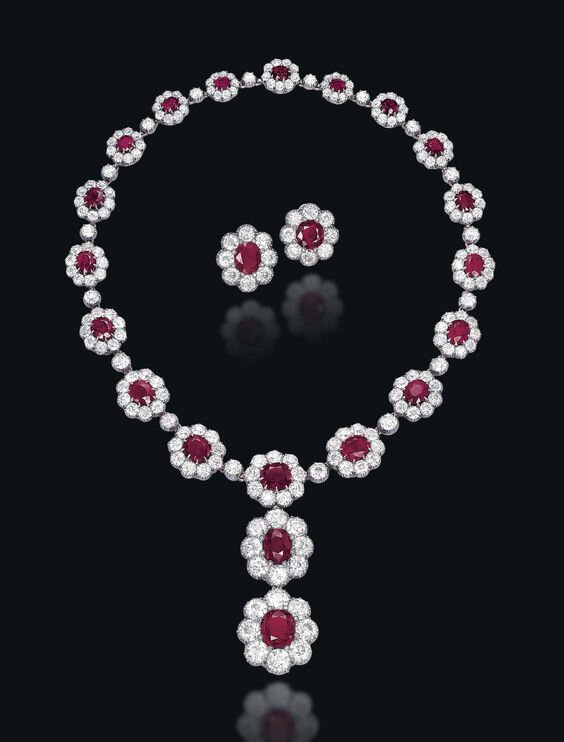



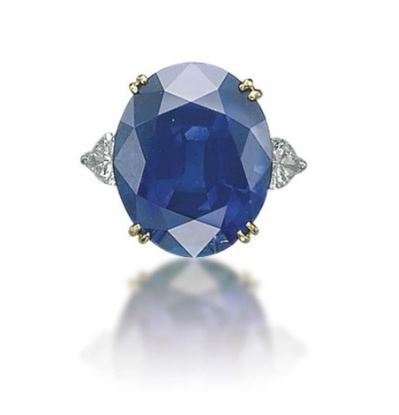





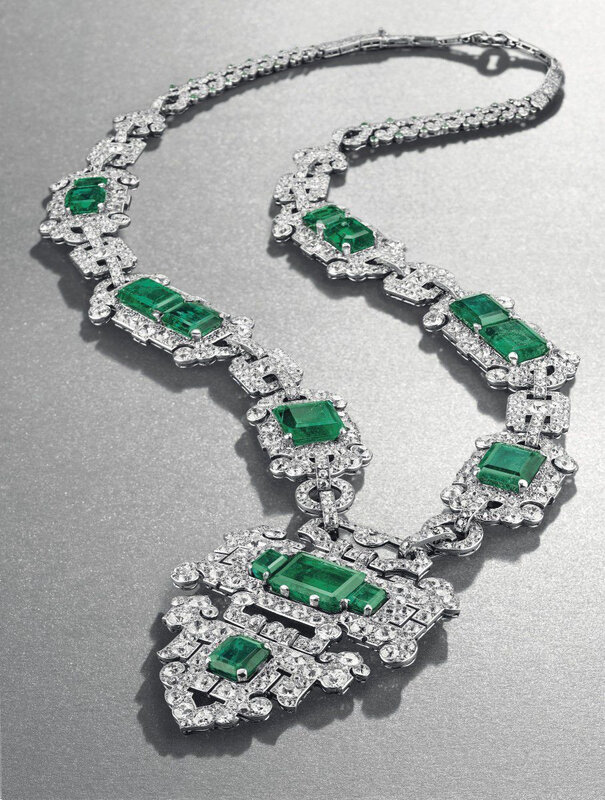

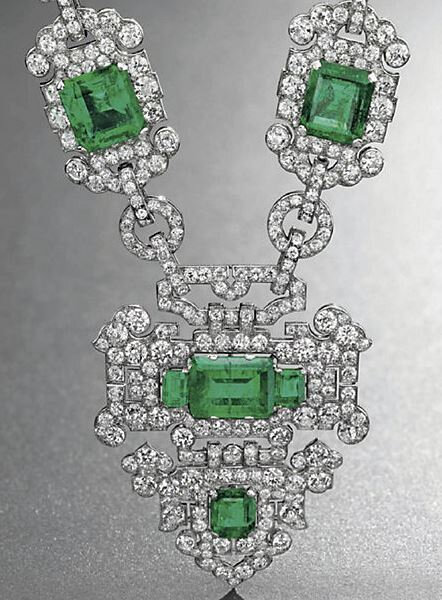








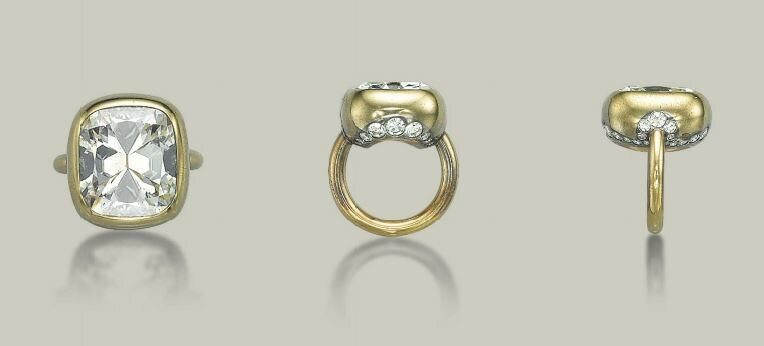




/image%2F1371349%2F20240315%2Fob_456a00_f12fdad5-0750-48f5-ae8f-7bd6836745f7.jpg)
/http%3A%2F%2Fstorage.canalblog.com%2F86%2F67%2F119589%2F129815803_o.png)
/http%3A%2F%2Fstorage.canalblog.com%2F40%2F54%2F119589%2F128112000_o.jpg)
/http%3A%2F%2Fstorage.canalblog.com%2F97%2F36%2F119589%2F128062654_o.png)